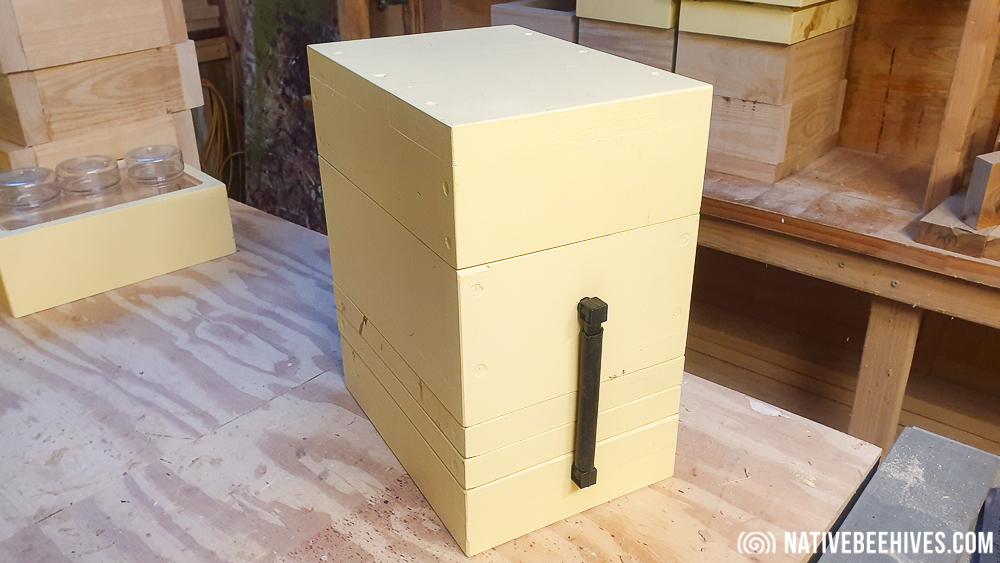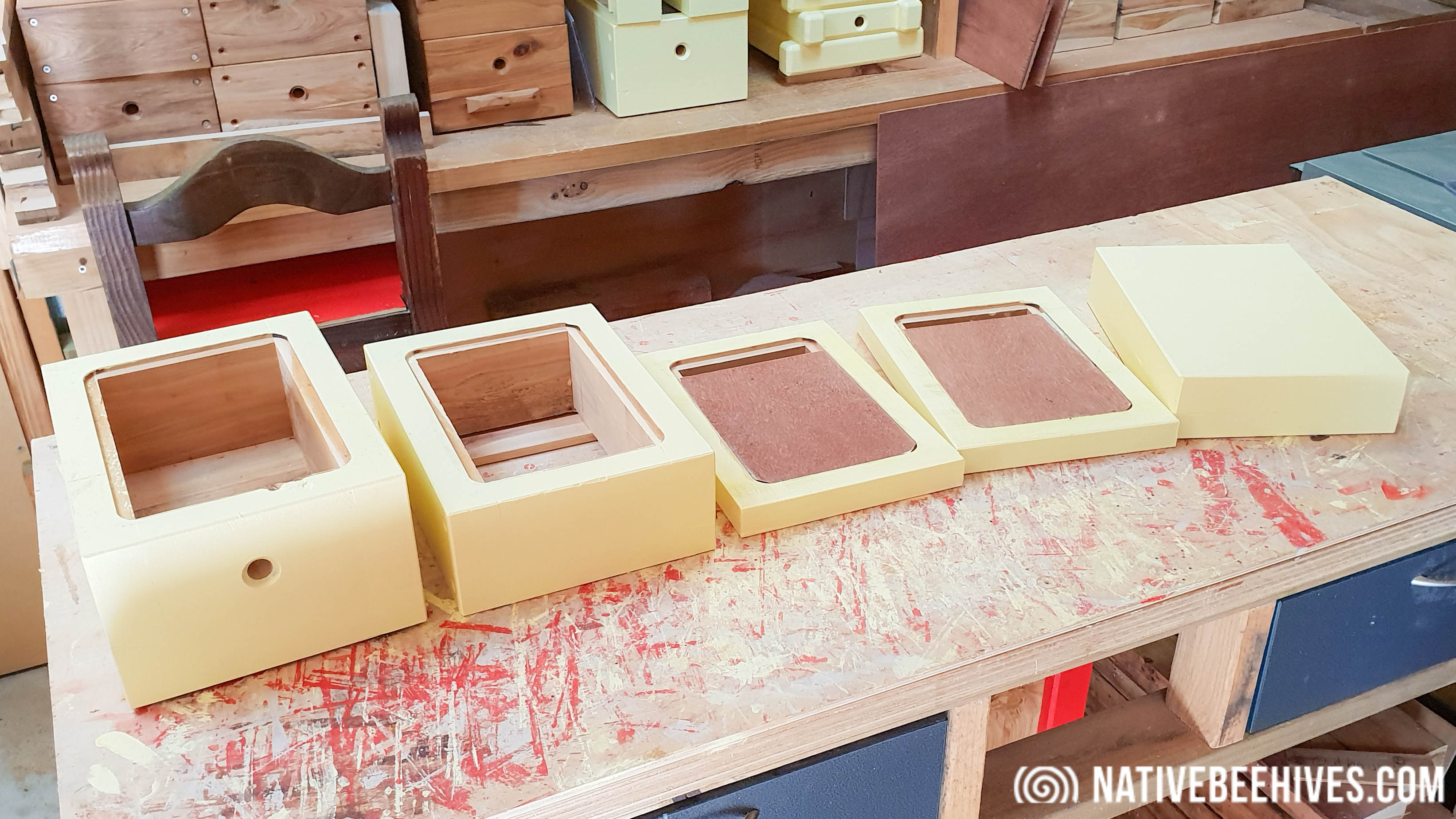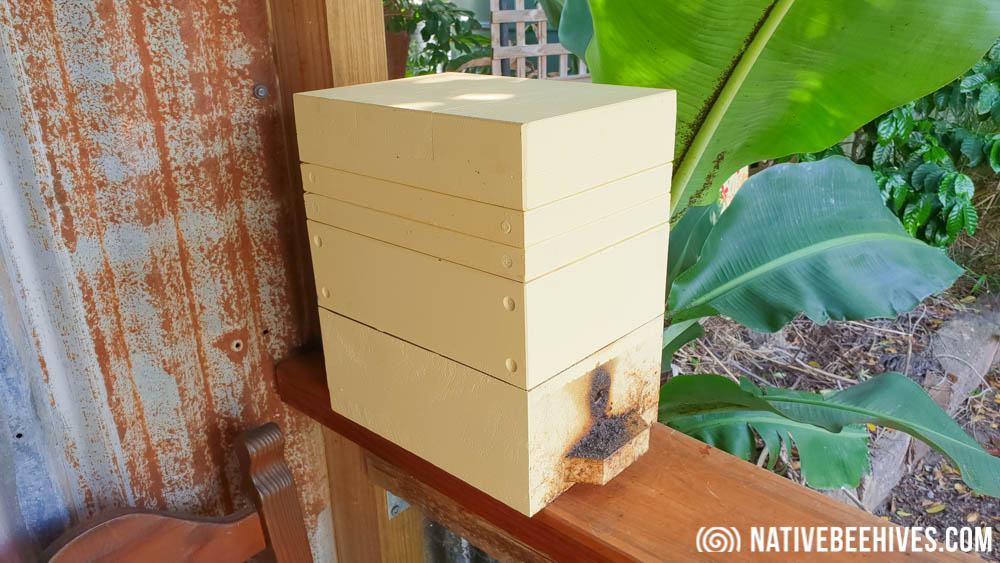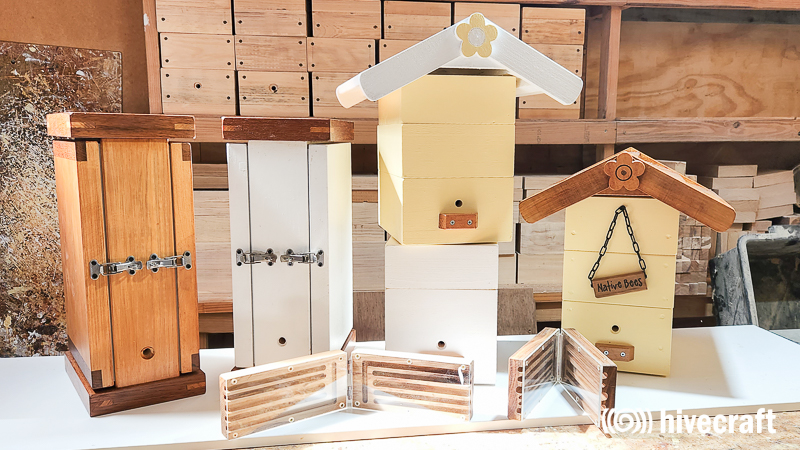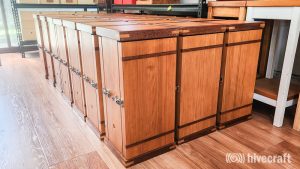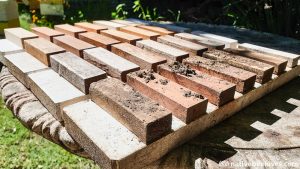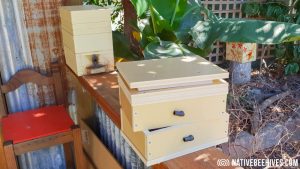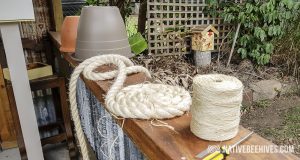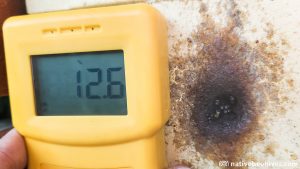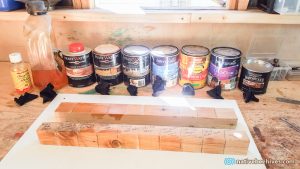Native Bee Box with Slim Honey Trays
These are slim honey tray frames that sit on top of the standard OATH design. There’s two frames and also the top lid with a similar shallow depth make it three frames for collecting honey. These three sections replace the standard honey super. The idea is to have a shallow area where the bees will construct single layers, or multiple layers of honey pots and they will be easier to harvest honey from. The system probably isn’t perfect and as with most things in stingless bee boxes, it may need some tweaking and that can take years.
These honey tray frames are of similar design to Nick Powells and also Doug Irvines frames. The trays could sit on top of anyones existing OATH box, just remove the honey super and put these on.
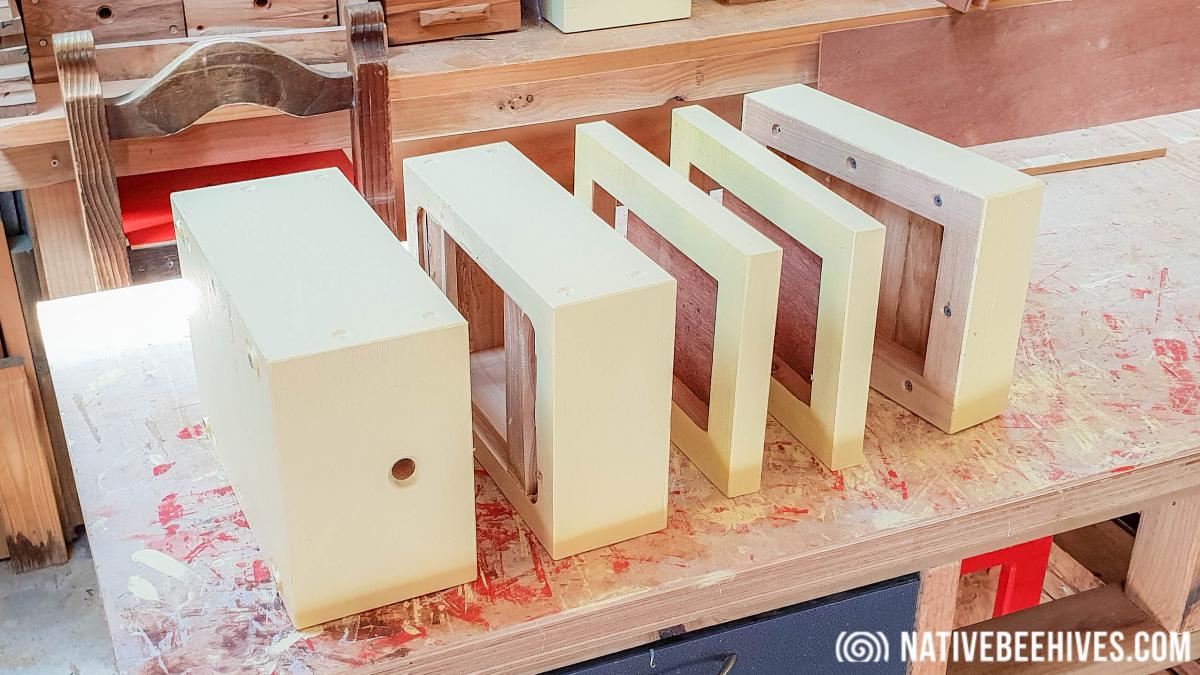
These are the first ones I’ve made and will get some bees in to the box to see how they work.

To keep with the same standard frame thickness and have different depths for the honey trays I’ve added extra layers of plywood to reduce the depth inside. (pictured up-side-down)

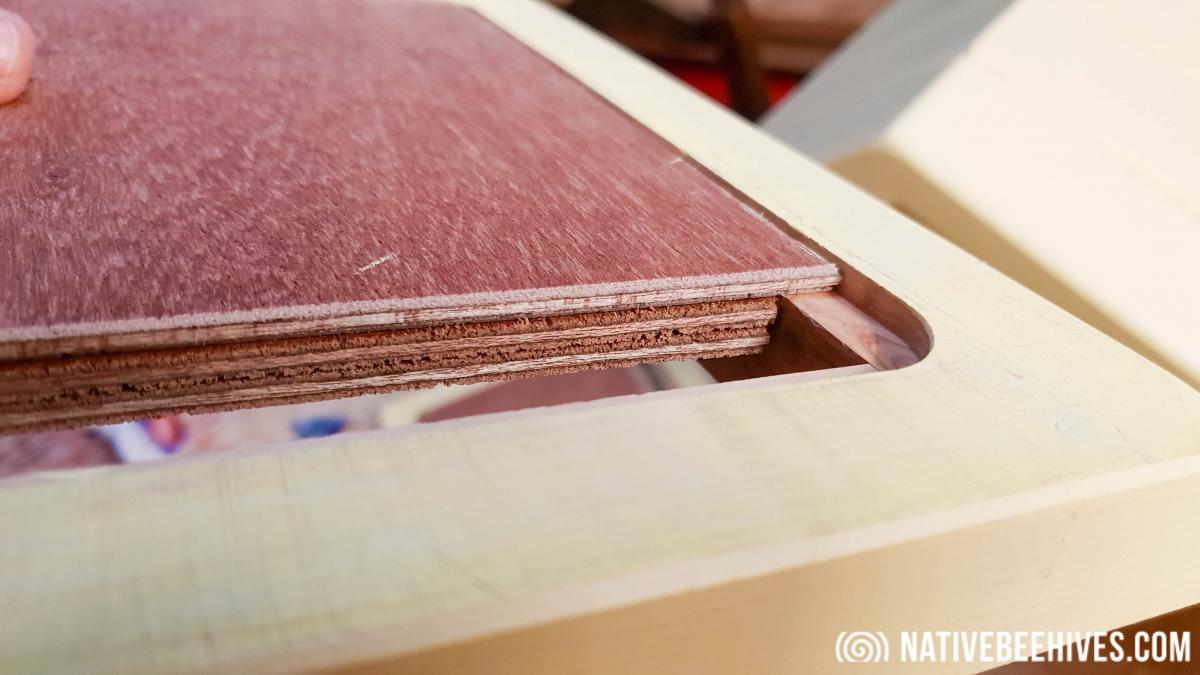
Below: The left frame has a 14mm depth, the middle frame 19mm depth and the right frame which is the top lid has no plywood inserted and is 23mm depth. So there’s a range to experiment with. This could be a set on top of one hive and you might see different results in each frame.

Below: Doug Irvine’s boxes and also his custom made spinner at the 2018 Bee Expo.
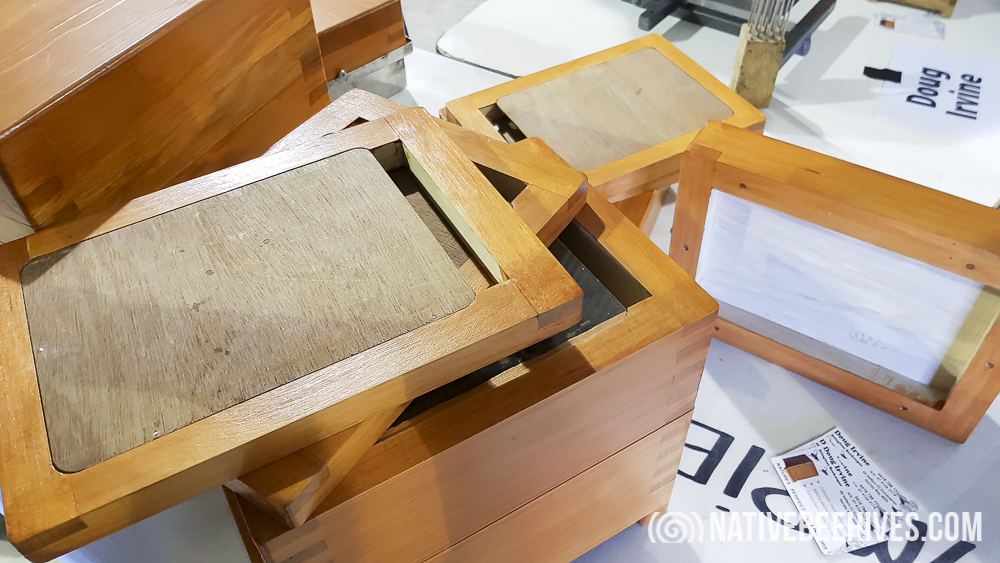

Some of Nick Powells observations:
- The top super will be used for resin storage
- The honey pots will have a stronger connection to a surface at the top of a honey pot and a weaker connection at the bottom
- 24mm frames ( I’ve made a few different depth frames just to see what happens)
Below – Update 06/11/2018
Finally i’ve had the opportunity to add the frames to a box full of bees. I’ll check the progress every now and then.
Below – Update 01/06/2019
Six months after install
I thought i’d check on the Honey Tray progress. I made a bit of a mess taking them apart as the honey pots broke open and spilled honey all over the place. This is ok because it was completely separate from the internals of the colony. I placed the honey frames on a mesh grid to drain the honey. This allowed the bees to get away as well. These frames seem to work really well as there’s no Pollen pots, just Honey Pots.
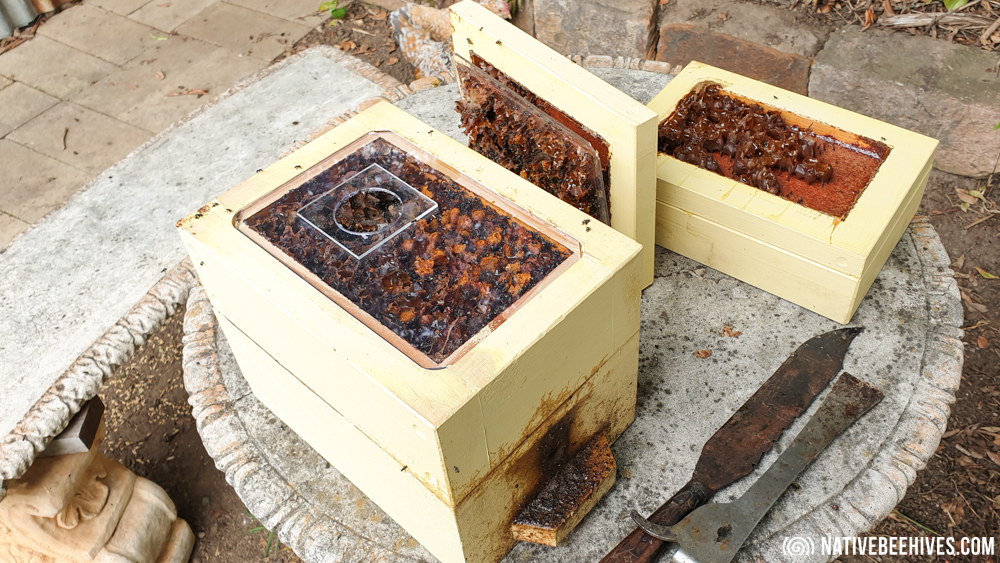
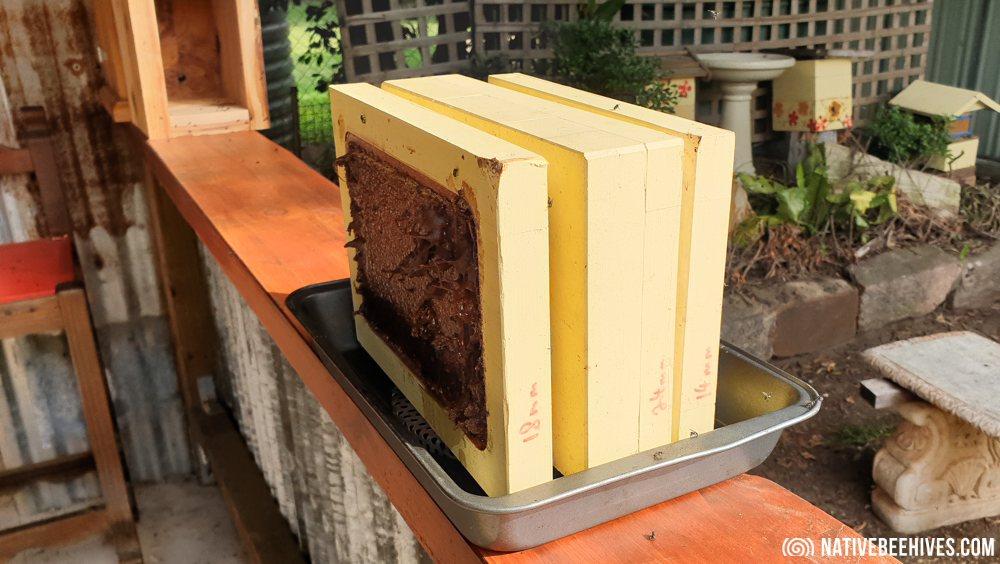
I have different depths of frames, 24mm, 18mm and 14mm. I found the 24mm frame to have more structure around the honey pot, some multiple levels of honey pots and over in the 14mm frame the honey pot was attached to the separating plate so when the plate was removed the base of the honey pot came away opening up the honey pot. I’m not sure which i size i prefer yet. Atleast with the 14mm frame i didn’t need to pierce the honey pots. One possible issue with piercing the honey pot is that you could push contaminates back in to the honey. Tearing the base off could be better? I have no evidence of that though, just theories.
Note: This is purely research and testing the frame design and how the bees construct their honey pots within the frame. Developing a clean extraction system will come later. I’m not harvesting honey to sell. Doug Irvine has built a new frame spinner which might be the way the go.
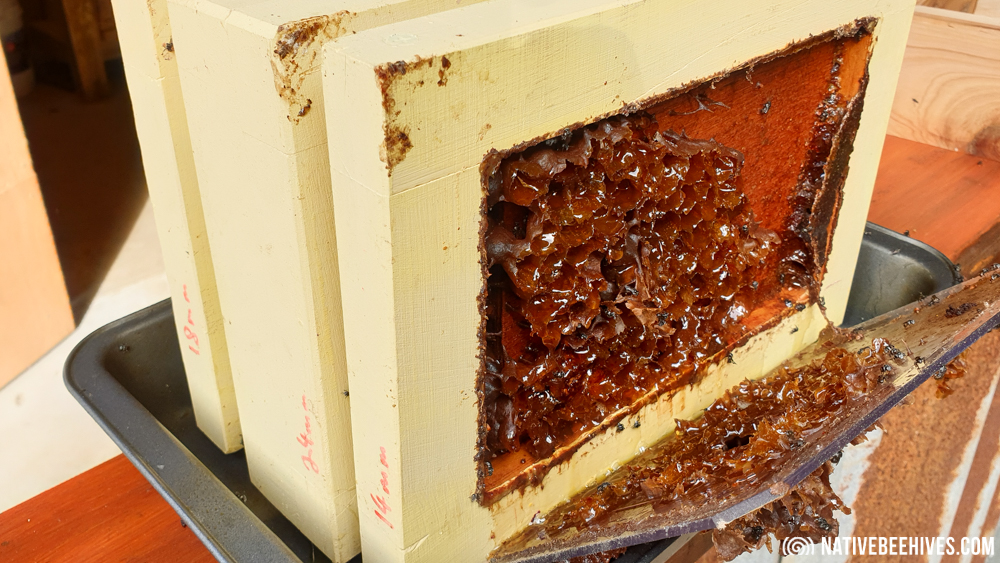
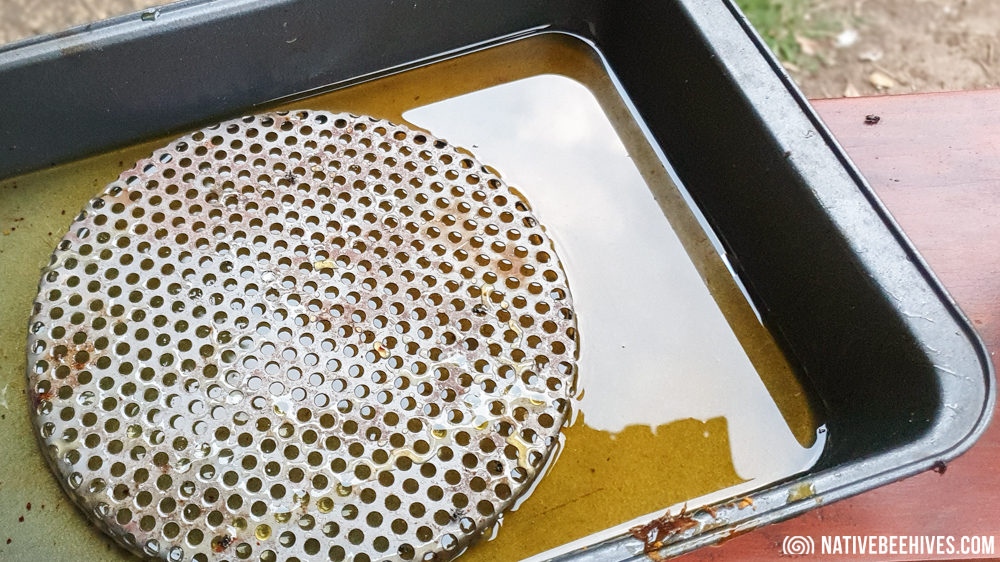
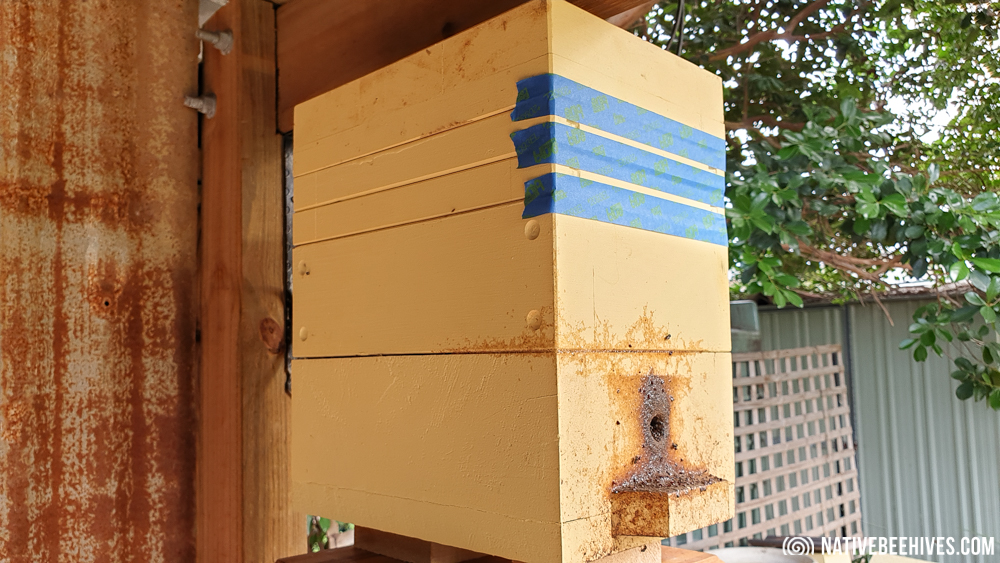
I left the honey trays to drain and placed new empty frames back on to the hive box. Once the honey drains from the frames i can harvest the Propolis and use it for other projects, like sealing up the Skep. (Skep Build Article).
Update below: 05/08/2020
As suggested by Mitch of Central Highland Native Bees
A new test for the slim frames. Keeping them divided off from the main box and only allowing access to the honey super section via an external tube. This could allow removal of the complete honey super without disturbing the main colony.
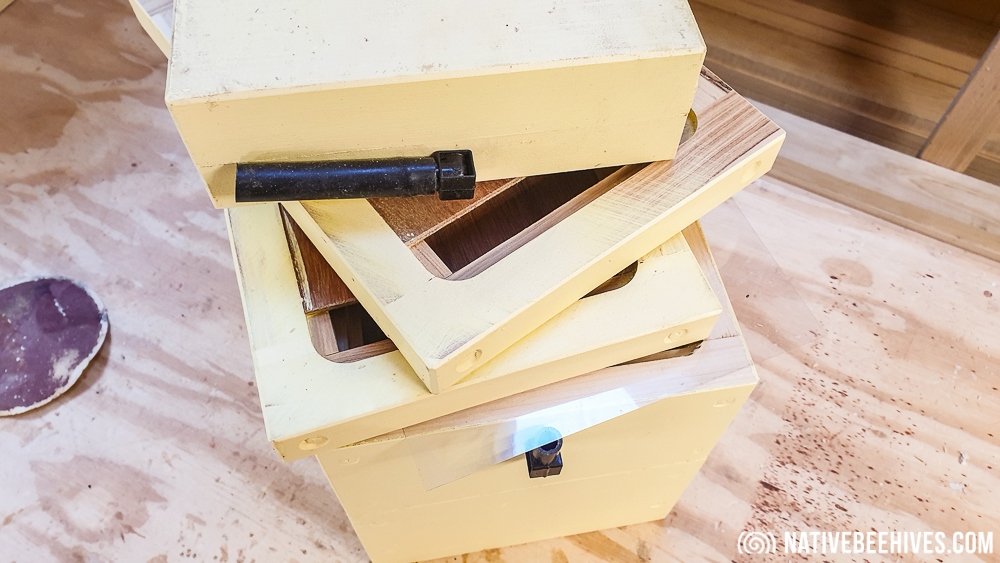
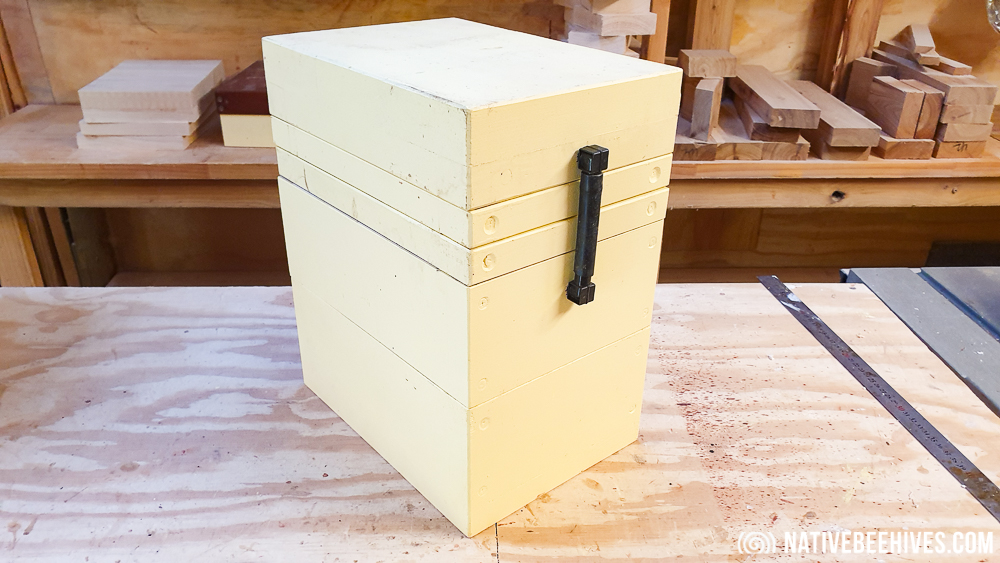
Update below: 09/08/2020
I might try this configuration too, frames mounted up-side-down underneath the main box..
